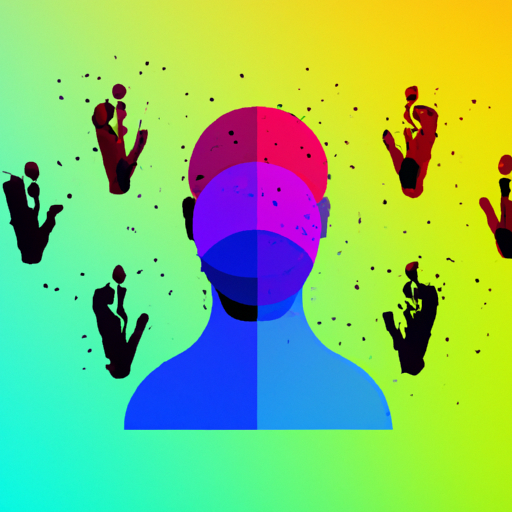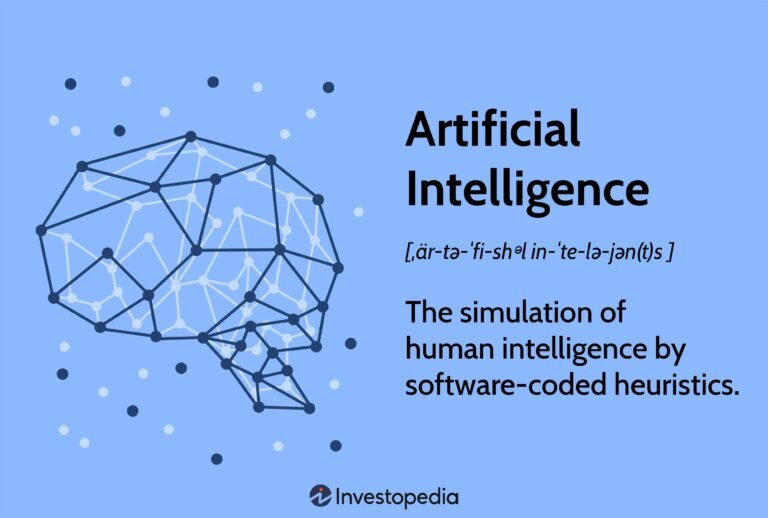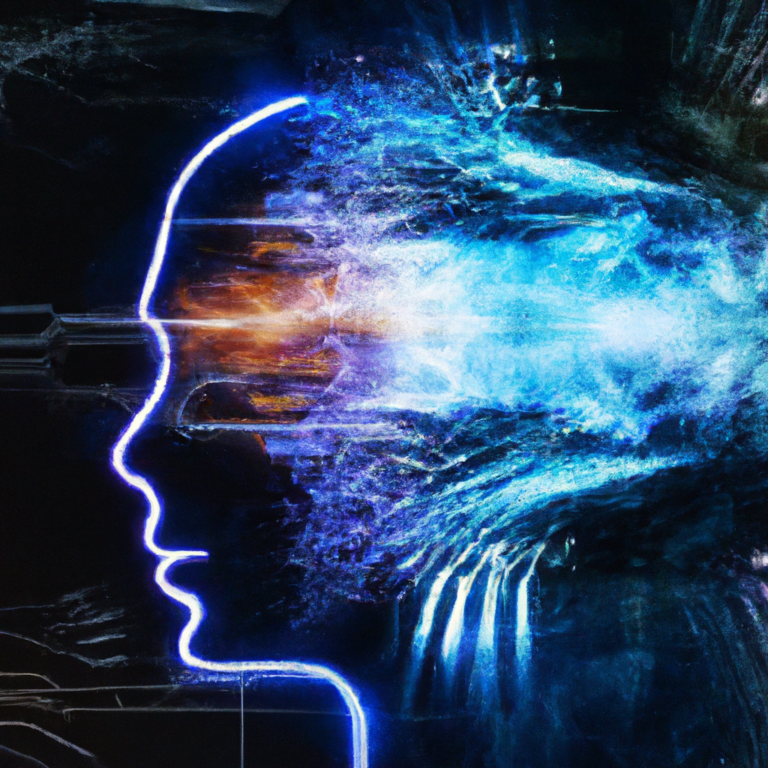Explaining AI To Non-technical People

Imagine trying to explain the complex world of Artificial Intelligence (AI) to someone who has no technical background. It can be quite a daunting task, but fear not! In this article, we will demystify the intricacies of AI and break it down into simple terms that anyone can understand. From understanding the basics to exploring its real-world applications, we’ll help you become an AI expert in no time. So sit back, relax, and get ready to embark on an enlightening journey into the fascinating world of AI.

What is AI?
Definition of AI
AI, or Artificial Intelligence, refers to the simulation of human intelligence in machines that are programmed to think and learn like humans. It involves the development of computer systems that can perform tasks that would typically require human intelligence, such as speech recognition, problem-solving, decision-making, and understanding natural language.
Types of AI
There are different types of AI, each with its own capabilities and applications. The two significant categories of AI are narrow AI and general AI. Narrow AI, also known as weak AI, is designed to perform specific tasks and is limited in its abilities. On the other hand, general AI, also referred to as strong AI, aims to possess the same level of intelligence as a human being and is capable of performing any intellectual task that a human can do.
How Does AI Work?
Machine Learning
Machine Learning is a subset of AI that focuses on the development of algorithms and statistical models that enable computers to learn and improve from experience. It involves training machines to recognize patterns in large amounts of data and make predictions or take actions based on that information. Machine learning algorithms can be categorized into three types – supervised learning, unsupervised learning, and reinforcement learning.
Deep Learning
Deep Learning is a subset of Machine Learning that is inspired by the structure and function of the human brain. It uses artificial neural networks to analyze and recognize patterns in data, similar to the way our brains process information. Deep learning algorithms are capable of automatically learning hierarchical representations of data and extracting complex features, making them suitable for tasks such as image and speech recognition.
Natural Language Processing
Natural Language Processing (NLP) enables machines to understand and interpret human language in a way that is meaningful to them. NLP techniques involve the analysis of text and speech and involve tasks such as sentiment analysis, language translation, and question-answering. NLP algorithms use a combination of computational linguistics, machine learning, and statistical models to comprehend and generate human-like language.
Computer Vision
Computer Vision is an AI technology that focuses on enabling machines to interpret, understand, and analyze visual information from images and videos. Computer vision algorithms can recognize and classify objects, detect and track motion, and extract meaningful insights from visual data. Applications of computer vision include facial recognition, object detection, autonomous navigation, and medical imaging.
Applications of AI
Virtual Assistants
Virtual Assistants, such as Amazon’s Alexa, Apple’s Siri, and Google Assistant, are AI-powered systems that can understand and respond to natural language commands. They can help users with tasks like setting reminders, answering questions, playing music, and controlling smart home devices. Virtual assistants use AI technologies like natural language processing and machine learning to provide personalized and contextually relevant information and services.
Recommendation Systems
Recommendation systems are AI algorithms that analyze user preferences and behavior to provide personalized suggestions and recommendations. These systems are commonly used in online platforms like e-commerce websites, streaming services, and social media platforms. By understanding user preferences and past interactions, recommendation systems can help users discover new products, movies, music, and content that they are likely to enjoy.
Fraud Detection
AI-powered fraud detection systems are designed to detect and prevent fraudulent activities in various domains, such as banking, insurance, and e-commerce. These systems analyze large volumes of data and detect anomalies or patterns that indicate fraudulent behavior. By leveraging machine learning algorithms, fraud detection systems can continuously learn and adapt to new fraud techniques, helping businesses protect themselves and their customers from financial loss.
Autonomous Vehicles
Autonomous vehicles, commonly known as self-driving cars, rely on AI technologies to navigate and operate without human intervention. These vehicles use a combination of computer vision, machine learning, and sensor technologies to perceive the environment, make decisions, and control the vehicle’s movements. Autonomous vehicles have the potential to revolutionize transportation by improving road safety, reducing congestion, and enhancing mobility for people who are unable to drive.

Benefits of AI
Increased Efficiency
AI technologies have the potential to significantly increase efficiency in various industries. By automating repetitive and mundane tasks, AI systems can free up human workers’ time and allow them to focus on more complex and strategic activities. AI can also process and analyze vast amounts of data much faster than humans, leading to faster decision-making and problem-solving.
Improved Decision Making
AI systems can process and analyze data from multiple sources, enabling businesses and individuals to make more informed and data-driven decisions. By uncovering patterns, trends, and insights that may not be apparent to humans, AI can provide valuable insights and recommendations. This can be especially useful in industries like finance, healthcare, and marketing, where accurate and timely decision-making is crucial.
Enhanced Customer Experience
AI technologies can improve the overall customer experience by providing personalized and contextually relevant interactions. Virtual assistants and recommendation systems, for example, can understand user preferences and behavior to provide tailored recommendations and assistance. Additionally, chatbots powered by AI can provide instant and efficient customer support, addressing common queries and issues without the need for human intervention.
Automation of Repetitive Tasks
One of the significant advantages of AI is its ability to automate repetitive and monotonous tasks. This can result in significant time and cost savings for businesses. AI-powered automation can perform tasks like data entry, document processing, customer support, and quality control much faster and more accurately than humans. By eliminating the need for manual labor on such tasks, organizations can redirect their human resources towards more strategic and creative endeavors.
Ethical Concerns and Challenges with AI
Privacy and Data Security
As AI systems rely on large amounts of data to learn and make predictions, privacy and data security become significant concerns. The collection and use of personal data raise questions about individual privacy rights and the potential for misuse or unauthorized access to sensitive information. It is crucial for AI systems to adhere to robust data protection measures and for organizations to be transparent about how they handle and use user data.
Bias and Discrimination
AI systems are trained using data, and if the training data is biased, it can lead to biased outcomes. For example, facial recognition algorithms that are trained primarily on data from certain ethnic groups may have difficulty accurately recognizing individuals from underrepresented groups. Bias in AI systems can perpetuate and amplify discrimination and inequality. Developers and organizations must be vigilant in detecting and mitigating bias in AI algorithms and datasets.
Job Displacement
The rise of AI has raised concerns about job displacement and the potential impact on the workforce. As AI systems become more capable of performing tasks traditionally done by humans, there is a possibility that certain jobs may become obsolete or significantly reduced in demand. However, AI also has the potential to create new job opportunities and transform existing roles. It is essential for individuals, organizations, and governments to proactively prepare for the changing job market and invest in reskilling and upskilling programs.
Human Control and Responsibility
As AI systems become more autonomous and capable of making decisions independently, questions arise regarding human control and responsibility. Who is accountable if an AI system makes a wrong decision or causes harm? Establishing clear guidelines and regulations around the development and deployment of AI is crucial to ensure that humans maintain control over AI systems and are accountable for their actions.
AI in Everyday Life
Smartphones and Personal Devices
AI is prevalent in smartphones and personal devices that many of us use daily. Virtual assistants like Siri and Google Assistant use AI technologies to understand and respond to voice commands. AI is also behind features like facial recognition for unlocking devices and image recognition for organizing and searching photos.
Social Media Platforms
AI plays a significant role in social media platforms, helping users discover and engage with content. Recommendation algorithms analyze user behavior patterns to show personalized content, while content moderation AI systems flag and remove inappropriate or harmful content. AI also powers features like automatic tagging, sentiment analysis, and targeted advertising.
Online Shopping
When you browse an online store, the product recommendations you see are powered by AI recommendation systems. These systems analyze your browsing and purchase history to suggest products you might be interested in. AI is also used in fraud detection to identify and prevent fraudulent transactions during online shopping.
Streaming Services
Streaming services like Netflix, Amazon Prime, and Spotify use AI algorithms to provide personalized recommendations based on your viewing or listening history. These recommendation systems analyze your preferences and behavior to suggest movies, TV shows, or music that you are likely to enjoy. AI also plays a role in content curation, optimizing streaming quality, and predicting user engagement.
AI and the Future
Transforming Industries
AI has the potential to transform numerous industries by introducing automation, improving efficiency, and enabling new capabilities. Industries like healthcare can benefit from AI-powered diagnostic systems and personalized treatment plans. Manufacturing can witness increased automation and optimization through AI-driven robotics and predictive maintenance. AI can also revolutionize industries like agriculture, finance, transportation, and energy with innovative solutions and smarter decision-making.
Expanding Human Capabilities
AI has the potential to enhance human capabilities by augmenting our skills and abilities. For example, AI-powered language translation tools enable people to communicate more efficiently across language barriers. AI-driven assistive technologies can improve the lives of individuals with disabilities by providing personalized support and assistance. In education, AI can personalize learning experiences, aiding students in understanding complex concepts and acquiring new knowledge effectively.
Impact on the Job Market
The rise of AI is expected to have a significant impact on the job market. While some jobs may be automated or replaced by AI systems, new job roles that require AI skills and expertise are likely to emerge. The job market will require individuals with a combination of technical skills, critical thinking, creativity, and adaptability. It is crucial for individuals to continually update their skills and embrace lifelong learning to thrive in the AI-driven job market.
Potential Risks and Rewards
AI presents both risks and rewards. The potential rewards include increased efficiency, improved decision-making, and enhanced quality of life. However, there are risks such as privacy concerns, biases in algorithms, job displacement, and the potential for misuse of AI technologies. It is essential to continue researching and developing AI ethically and responsibly, with a focus on transparency, fairness, and human-centric design to ensure that the benefits of AI are maximized while minimizing potential risks.
Common Misconceptions about AI
AI is Sentient
Contrary to popular belief, AI is not sentient and does not possess consciousness or self-awareness. AI systems are designed to perform specific tasks and operate based on predefined algorithms and models. While they can simulate intelligent behavior and learn from data, AI does not possess human-like understanding or emotions.
AI will Replace Humans
AI technologies are designed to augment human capabilities and assist in performing tasks more efficiently. While AI can automate certain tasks, it is unlikely to completely replace the need for human workers. AI is most effective when it works in collaboration with humans, combining the strengths of both to achieve better outcomes.
AI is Perfect and Unbiased
AI systems are only as good as the data they are trained on and the algorithms they use. If the training data is biased, it can lead to biased outcomes and reinforce existing inequalities. Moreover, AI systems can make errors and are not infallible. Continuous monitoring, evaluation, and improvement are necessary to minimize biases and ensure the accuracy and fairness of AI systems.
AI is Only for Large Corporations
While large corporations are at the forefront of AI research and development, AI technologies are becoming increasingly accessible to organizations of all sizes. There are various off-the-shelf AI tools and platforms available that allow smaller businesses and startups to leverage AI capabilities without significant investments in research and development.
How to Evaluate AI Systems
Accuracy and Performance
When evaluating AI systems, accuracy and performance are crucial factors to consider. The system should demonstrate a high accuracy rate in performing the intended task, whether it is recognizing objects in images or translating languages. Additionally, the system’s performance, including speed and efficiency, should be evaluated to ensure it meets the desired requirements.
Transparency and Explainability
Transparency and explainability are essential for building trust in AI systems. It should be possible to understand how the AI system arrives at its decisions or predictions. Black-box AI systems that cannot provide explanations for their outputs may raise concerns, especially in critical applications such as healthcare or finance. Building AI systems with explainable algorithms and providing interpretability can help address this concern.
Bias Analysis
Bias analysis is crucial to ensure fairness and prevent discrimination in AI systems. Evaluating whether an AI system exhibits bias, whether it is based on race, gender, or other factors, should be an integral part of the evaluation process. Bias should be identified, understood, and actively addressed to ensure fairness and equity in AI applications.
Data Ethics
Evaluating AI systems also involves considering data ethics. It is essential to ensure that the data used to train AI models is collected and used ethically and legally. This includes obtaining consent, protecting privacy, and ensuring the data used represents diverse populations. Organizations should have clear policies and practices in place to handle data responsibly and in compliance with relevant regulations.
Improving AI Literacy
Explaining AI Terminology
Improving AI literacy starts with demystifying the terminology and concepts associated with AI. Educating individuals on AI-specific terms, such as machine learning, deep learning, and natural language processing, can help them understand the capabilities and limitations of AI systems.
Sharing Real-Life Examples
Sharing real-life examples of AI applications can help individuals relate to AI and understand its impact. Highlighting how AI is used in everyday life, such as virtual assistants and recommendation systems, can make AI more tangible and relatable to non-technical individuals.
Debunking Myths and Misunderstandings
Addressing common misconceptions and debunking myths about AI is essential in improving AI literacy. Providing accurate and accessible information can help dispel fears and misconceptions that may hinder individuals’ understanding and adoption of AI technologies.
Encouraging Continuous Learning
Encouraging continuous learning about AI is crucial in a fast-paced technological landscape. Promoting AI literacy through workshops, online courses, and educational resources can help individuals stay updated on the latest developments and trends in AI. Continual learning empowers individuals to make informed decisions and contribute to discussions around AI ethics, policy-making, and responsible AI development.
In conclusion, AI is a rapidly advancing field with the potential to transform industries, improve efficiency, and enhance our daily lives. Understanding the basics of AI, its applications, benefits, ethical concerns, and evaluation criteria is important for all individuals, regardless of technical expertise. By increasing AI literacy and promoting responsible AI development, we can harness the power of AI to create a more inclusive, efficient, and innovative future.






